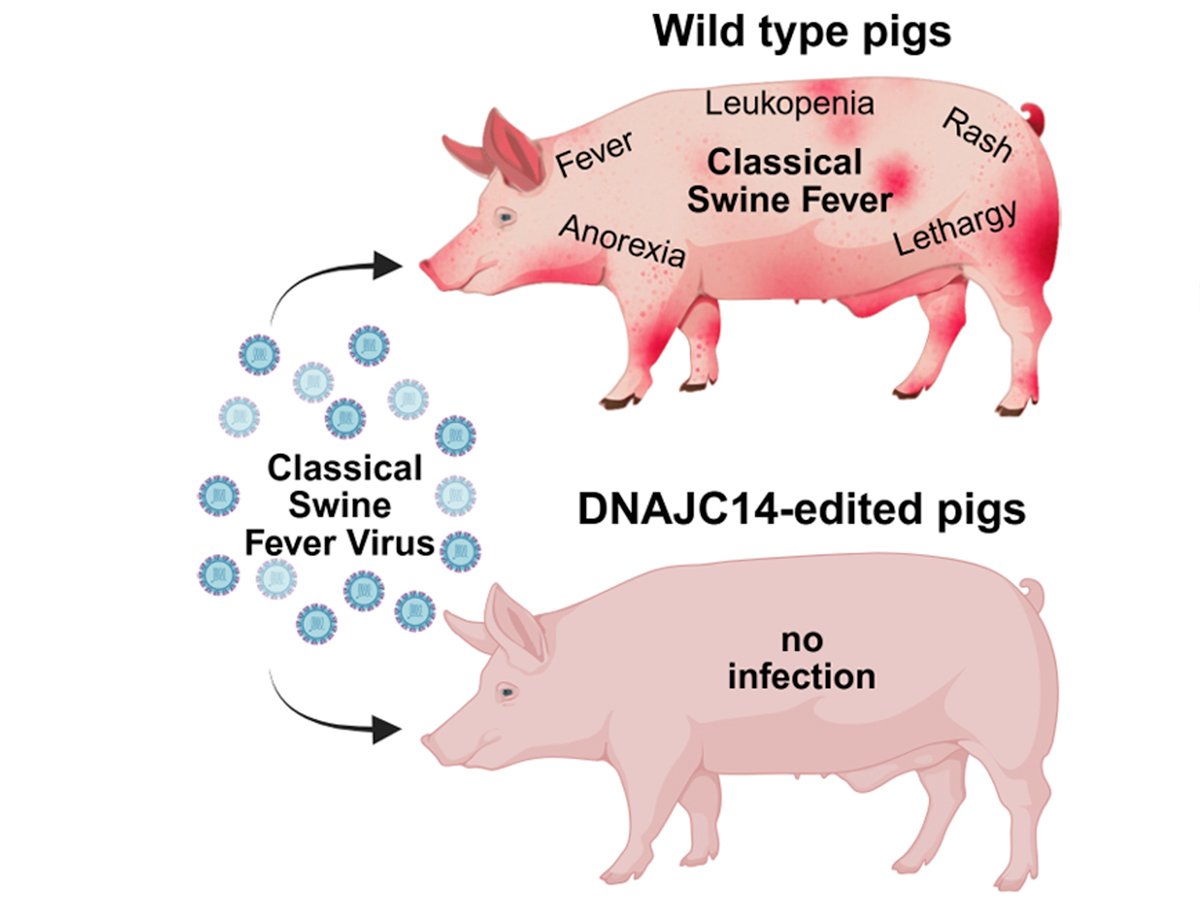Bug experts say producers should be looking for cutworms and wireworms as the growing season gets underway.
They say now is the best time to locate them, given that the worms become increasingly difficult to catch as times goes on.
“This is the time of year to catch these pests red-handed,” said Haley Catton, a crop entomologist with Agriculture Canada in Lethbridge, while speaking last week during a webinar about potential insect problems for 2020.
“As the summer goes on, you won’t catch them. The wireworms will be down deeper in the soil and the cutworms may have moved on to a later life stage,” she said during the webinar, which was hosted by the Alberta wheat and barley commissions.
Read Also

Gene edited pig resistant to classical swine fever
British scientists have discovered a gene edit that could provide resistance to classical swine fever in pigs and Bovine Viral Diarrhea in cattle
Catton said wireworms and cutworms require different treatments.
Cutworms can be dealt with through foliar applications, but she said it’s important for farmers to know if they indeed have the pest.
Needless spraying will kill beneficial insects, she said.
Wireworms are trickier to deal with.
There are no chemical treatments that kill them, but there is a new product in the works that should be promising, said Boyd Mori, an assistant professor with the agricultural, food and nutritional science department at the University of Alberta.
Mori said the new product is expected to be available in 2021.
“Hopefully that will give producers a way to manage and kill wireworms in their fields.”
He said wireworms feed on multiple crops, especially cereals. They can live for two to seven years. Eggs are laid in the spring and the pests can be large or small.
Mori said wireworm populations are increasing, a reflection on the lack of control options.
Wireworm bait traps are helpful but only effective before seeding, Catton said. The pests are attracted to carbon dioxide. When seeds are growing in the soil, the worms refocus their attention on them.
Mori said producers should look for bare patches when scouting for cutworms or wireworms. There might be birds flying above a certain patch of field.

He said cutworms like to move down rows and are night-time feeders. Producers will have to dig during the day, especially if it’s hot, to locate them.
“If it’s very hot, they can be up to eight to 10 centimetres in the soil,” he said. “You are going to want to be digging around and looking for them.”
He said a wireworm field guide is currently being developed and should be available this fall.
During the webinar, Mori provided an updated outlook on other insects.
He said grasshopper populations in the north-central and Peace regions might not be as bad as what is being predicted by Alberta Agriculture.
The most common grasshopper species in that area, the Bruner, might have a two-year life cycle, he added, which suggests the prediction model could be one year off.
For example, the model predicted low levels of grasshoppers in 2019 for the Peace and north-central regions, but the levels were higher that year. In 2018, when high levels were predicted, grasshopper populations there were actually lower.
Mori said the life cycle of the Bruner is currently being researched.
As well, the one year lag applies only to the Peace and north-central regions.
“We still see the annual cycle of grasshoppers in southern Alberta,” Mori said.
The grasshopper forecast predicts higher populations south of Lethbridge and northeast of Medicine Hat.
As for wheat stem sawfly, hotspots might again occur in southern Alberta, particularly close to the U.S. border and southeast of Calgary.
The wheat midge forecast for this year suggests higher infestation levels southwest of Lloydminster.
















